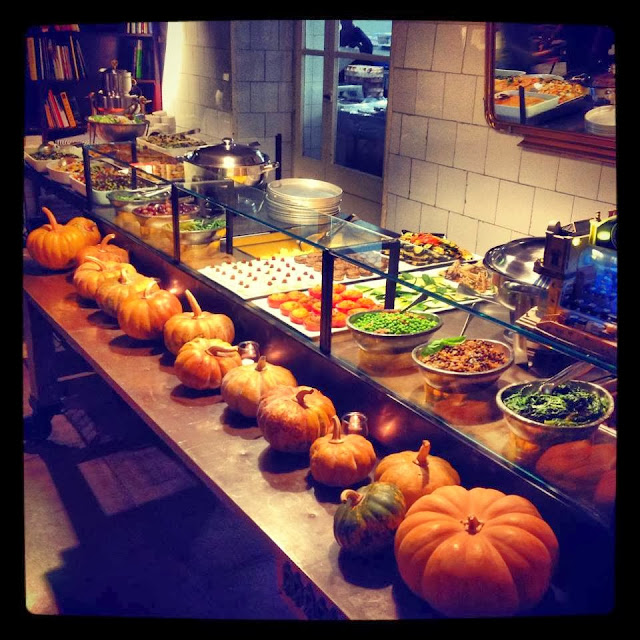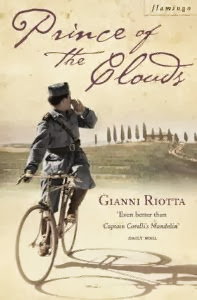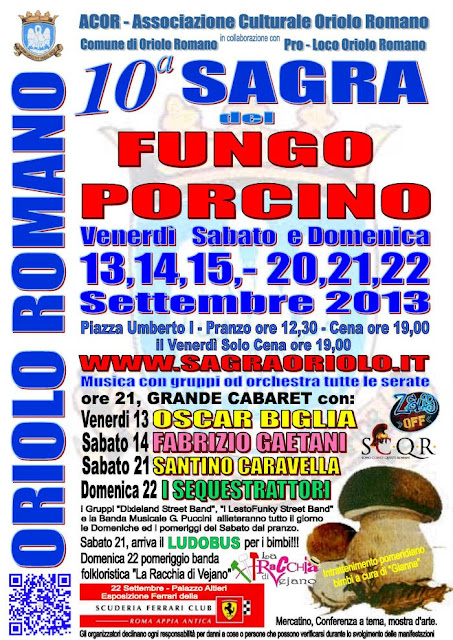The beach in Rimini? In winter?
Well no. I want to tell you about our summer vacation to our holiday home in Emilia-Romagna, in between San Marino and Rimini. In August. It was my first Italian beach holiday experience. Ever since we met, my wife has pestered me to go away with her on the classic Italian family vacation. The Italian beach holiday. Indeed, she hadn't gone herself since we met, so last year, I caved in.
Initially, I wasn't keen. The thing is, I'm simply not built for this kind of holiday. I'm a trekking up mountains, tea and cake, maybe a museum-kinda guy, not a laying by the beach then more laying by the beach one. I'll be honest, I was dreading it.
I shouldn't have bothered. It was lovely. We're very lucky, in that we have access to an old house, nestled on a small hilltop, with views to the sea in one direction, and the republic of San Marino in the other (which I blogged about
here). We arrived after a long drive from Lazio, with two short stops - the obligatory caffeine stop at a mountaintop cafe bar, and the charming Umbrian town of Gubbio, which I will blog about one day. Arriving at the house was like arriving in paradise. The rolling fields, the swallows swooping overhead (hopefully hoovering up all the many, many
zanzare that were waiting in ambush), and of course, that lovely breeze coming all the way from the sea.

|
| You can just make out the Adriatic in the distance |
We didn't have much time to take all this in though, as I'd forgotten one thing. Italy isn't the charming, relaxed place one reads about in those books where people move to Italy and find themselves.
Laissez-faire is a phrase borrowed from the French, not the Italians. We had a schedule, and it must be respected. Even if you're English, have no idea of the schedule, and fancy yourself as a bit of a Montalbano, enjoying a moka cafe on the balcony overlooking the (albeit distant) sea. We had a schedule. We were off to the beach at Riccione. We were off to the sea.
The Italian Seaside is fascinating. Honestly. It's like a David Attenborough special about human behavior. We arrive at the beach. Bagno 130/131, the usual spot. The one my in-laws go to every year. Of course, they know the lifeguards, who, it turns out, also run the place. They rent parasols and sun loungers, and know everything about everyone. Pleasantries exchanged, we set off with our chaperone lifeguard to pick our spot. Would we go for a space right next to the sea? No. We went for one that was near the cafe, almost as far from the sea and its cooling breeze as you could get. Nevermind. The reasons for this choice would soon become clear. From then, no time to hang around as it was time to head to the supermarket and then home for a simple yet delicious pasta.
The next few days blurred into one. One regimented day, that is. Why? Because Italian beach holidays have a routine. We get up early, showered, ate, and then head down to Riccione and our Bagno. We arrive, hours after everyone else (it seems), and take our positions at our parasol. After dumping our bags and arranging sun protection (only for the youngsters, the old generation didn't believe it was necessary on a 39 degree cloudless day), I was initiated in the first (and frankly most important) ritual of the day. It was time for a coffee with papa`. We tiptoed over the scorching sand to the bar (every bagno has a bar, serving coffee and cornetti by day, and more salubrious treats by night), and ordered our coffees. While waiting, we check the sport newspapers, catch up on the olympics, the soccer, and generally lower the tone of the place....

After coffee, we lay in the sun for a few hours, before, come 11:20, we head for a walk down the beach. One day we walk up to Rimini, the next day, we walk down towards Cattolica. Then, 12:30, we heed the call over the loudspeaker, that the sun is dangerously hot, and head for lunch. We pack up, get back in the car, and head back home. Once home, we shower, change clothes, eat a delicious pasta, and then have a snooze. Then, come 3pm, it's time to head back to the beach. We go to our parasol, deposit our things. Then it's time for a drink. The same bar. This time a Becks. Come 6pm, it's time to go home. The next day? Well, maybe we can vary it a little, do you want to walk the same way up the beach as yesterday, or the other way?

|
| Rimini is this way. Obviously. |
Once you get the routine though, you're golden. I relaxed into the schedule, let it wash over me. I now know that you shouldn't go for a swim until it's at least three hours after you've eaten, and that Italian kids really can do whatever they want at the beach. The beach is great fun, and there's always something going on. So, my advice? Don't just bring a book* and lie on the beach. Wander around, people watch, and simply go with the routine. I mean flow. I mean flow.
Rimini, Riccione, Cattolica - I will be back. To the same Bagno, at exactly the same time....
So what else is there to do besides the beach?
Well, in Riccione, not so much. There's a lovely promenade along the beach, and two pedestrianised wide boulevard nearby,
Viale Dante and
Viale Ceccarini. This is where all the teenagers come for their summer romance. What's nice though is that, whatever age or nationality you are, you don't feel out of place. Plus of course, there's that wonderful Italian habit of it never being too late for Ice Cream. There's plenty of shops for late night shopping, events and shows on the streets, plus a water park for the kids. Outside of the strip, there's Rimini old town, the many lovely towns and villages of Emilia-Romagna, and of course, 30 miles from the coast, the Republic of San Marino.
There are plenty of places to eat on the coast, many of which specialise in (excellent) seafood, but here are our two favorites:
Pesce Azzuro - a small cooperative, set-up by the fishermen themselves, serves basic yet excellent seafood in Rimini, Riccione and Cattolica (the one we went to). It's self-service, and set-up essentially like a canteen, but for 12euros you get a tray filled with about 6 different seafood dishes, and unlimited wine. More information (in Italian) can be found on their website:
pesceazzuro
La Greppia - about 5km from the Adriatic just outside the town of Coriano, my better half's family have eaten at this restaurant for over 40 years and after one mouthful you'll know why. Tasty Emilia-Romagna specialities (and not just seafood) combined with great service. Book ahead if possible. More information (in Italian) can be found on their website:
La Greppia
*If you did want to take a book, I can recommend An Italian Education by Tim Parks (see my
review). I was reading while on the beach and it really captures the Italian beach experience, as well as providing a great intro into Italian family culture. Perfect for reading on the sun lounger...
















